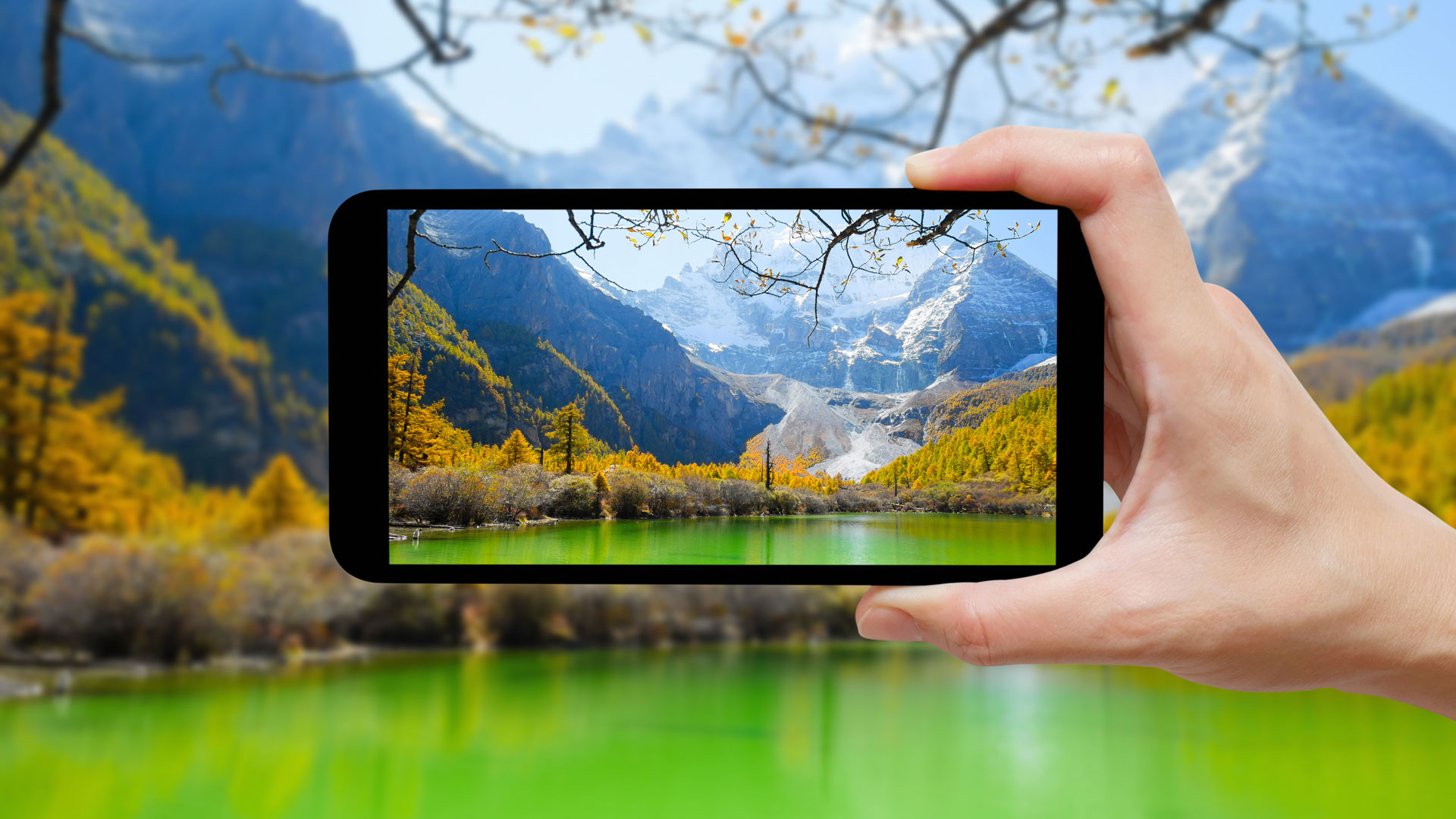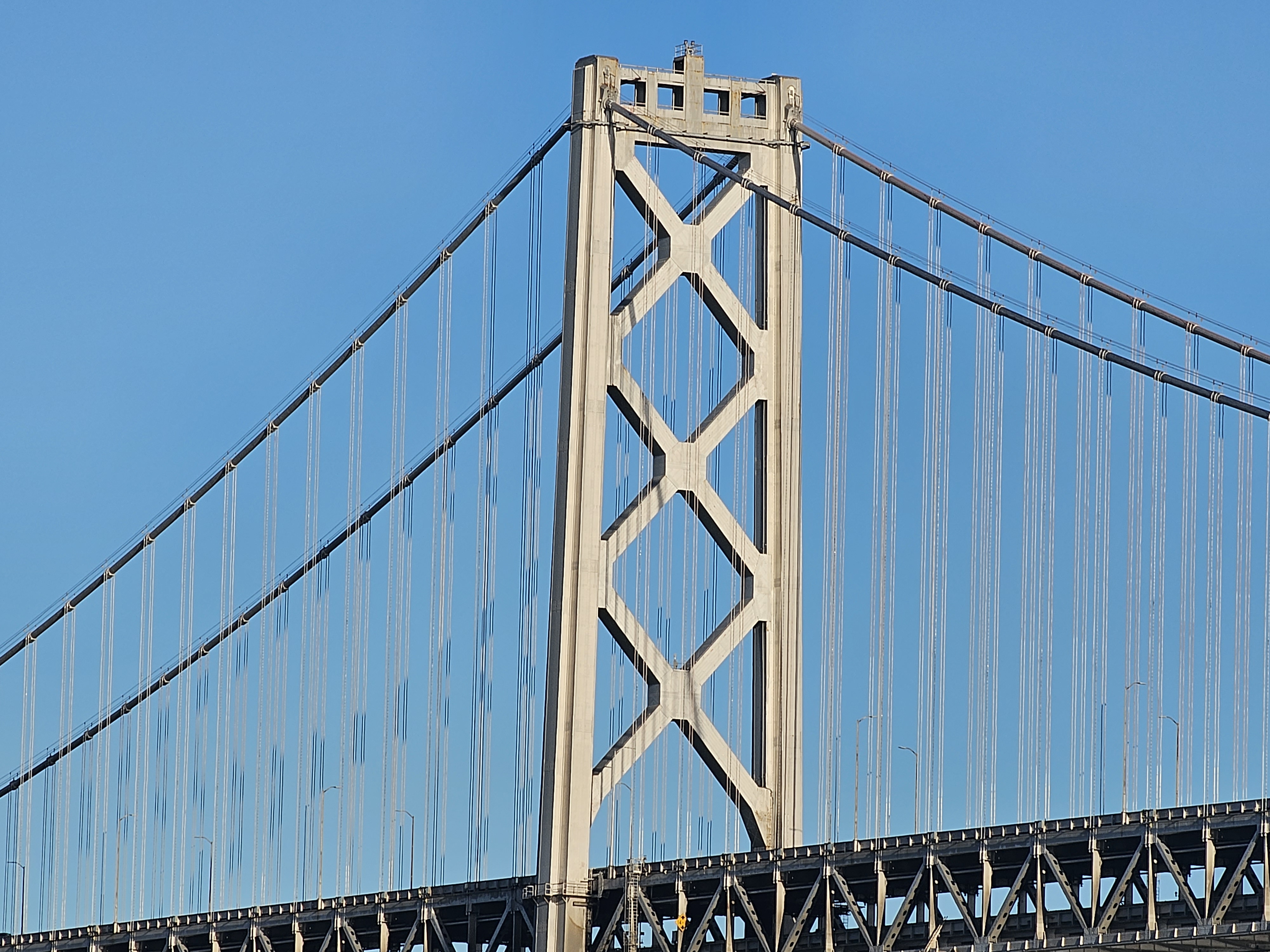Can the best flagship smartphone camera replace your beloved mirrorless or DSLR?
It’s all about intention and creative control

Whenever a new premium smartphone launches, manufacturers breathlessly wax poetic about the latest model’s updated camera array. But can a flagship smartphone camera like the one on the Apple iPhone 15 Pro Max or the Samsung Galaxy S23 Ultra replace your mirrorless camera or DSLR? I’m a photographer and I can say definitively there is no one answer to this question. It all boils down to a trade-off between creative control and convenience.
It also helps to know how you plan to use your photos. Sharing casual snaps with friends on social media is a different proposition from printing family event photos for posterity or capturing images for use as part of your business.
The smartphone camera vs. dedicated camera question posed above is not new: It comes up with every flagship phone upgrade cycle, accompanied by the annual hype about the phone’s bigger sensor, longer zoom lens, and now AI-driven image processing.
In the right lighting, these images can rival or—thanks to in-phone HDR and AI image processing—best some interchangeable lens, APS-C or full-frame sensor cameras.
Now, it’s time to rephrase that question. The reality is smartphone cameras are more capable than ever, and they can capture terrific images. In the right lighting, these images can rival or—thanks to in-phone HDR and AI image processing—best some interchangeable lens, APS-C or full-frame sensor cameras.
Also true: Computational photography, AI, and other programmatic smartphone camera imaging tricks can’t match the potential image quality of a dedicated camera – especially if you want to crop into your image or view it at full resolution on a 4K monitor. Camera phones simply can’t escape the laws of physics governing photography, including the interplay among light, optics, and sensor size.
What you capture with each device depends a lot on the camera body and lens you’re using, as well as your photography skills. And sometimes, it comes down to what works in the heat of the moment.
I took a Samsung Galaxy S23 Ultra phone and a Canon EOS R7 with an RF-S 18-150mm F3.5-6.3 IS STM kit lens and an RF 28mm F2.8 STM lens on a walkabout. Despite always having both handy, I reached for the S23 Ultra smartphone a lot. Most times, it came down to understanding the pros and cons of the R7’s specs versus what I could do with the S23 Ultra’s cameras.
Sign up for breaking news, reviews, opinion, top tech deals, and more.
Let’s dive into some different scenarios to see which camera type holds an advantage – and why sometimes my smartphone camera is the better choice.
Convenience


Smartphone cameras reign supreme on this metric. My phone is always with me, which means I always have a camera on hand–even if I know it’s not the best camera for the job. More often than not, the S23 Ultra captured satisfying images quickly, and I could share those images on social media with a couple of swift taps. The S23 Ultra did best with stationary subjects in consistent lighting.
By choosing the S23 Ultra, I ceded control of the image settings to the phone’s camera subsystem. That meant accepting Samsung’s tendency to capture vibrant, oversaturated colors and the occasional overexposure. Apple’s iPhone 15 Pro Max is known for its balanced, more realistic colors; and Google’s Pixel 8 Pro is known for using AI to enhance images as they’re captured.
When I reached for the S23 Ultra, I did so in part because of its subtle profile and easy maneuverability. It was a choice I made in favor of the lightweight phone’s point-and-shoot convenience. It helped knowing the S23 Ultra has three optical zoom focal lengths; the 10X zoom makes the S23 Ultra feel more like a full-fledged camera.
I used the S23 Ultra’s camera previously at a formal wedding for similar reasons. It was both socially and physically awkward to tote a proper low-light rig like a full-frame mirrorless camera and Canon’s RF 70-200 f/2.8, the same kind of gear the wedding’s photographer might bring. Plus, that kind of combo gets heavy (up to 4.6 pounds if paired with the Canon EOS R3) and it is expensive to own (the lens alone sells for $2,799).
As much as I love the smartphone camera’s convenience, I recognize its limitations. I look forward to when I can zoom into an image and not notice the lack of sharp edges, loss of detail, or mottled color. For many casual scenarios, though, I’m willing to trade off those quality questions in favor of the S23 Ultra’s portability.
Winner: Smartphone camera.
Versatility
As a photographer, I know the principles of exposure, focus points, aperture, ISO, and other image characteristics available using a dedicated camera. Not all images need this level of treatment, but when I want it – or I’m in a hurry – nothing beats an APS-C or full-frame camera.
In my walkabouts, I used the R7’s physical dials and wheels with practiced precision, making adjustments on the fly in manual mode since I’m familiar with my preferred settings with different lenses. I also found I could adjust my settings more quickly and reliably than on a smartphone camera. The R7 got bonus points because I could capture RAW images at any setting and any optical focal length, the same as any mirrorless or DSLR camera allows.
For all their point-and-shoot convenience, smartphone cameras have their share of usability challenges. For starters, most cameras – including the S23 Ultra – have limitations on the lenses and megapixels you can use for shooting RAW.
The on-screen manual controls are imprecise and can become a time-consuming hassle. Just ask anyone who’s fussed with the S23 Ultra’s ExpertRAW app or Pro settings, or tried to lock exposure on a smartphone (tap, slide, whoops my finger hit the screen wrong…slide again…yes, even the Apple iPhone falls into this trap). Changing settings on a phone becomes an awkward time sink while you’re standing on a street corner – and while you’re looking down at your screen, you might miss the shot. That happened to me plenty of times during my walks.


For walking around all day, I wanted to be nimble, and I didn’t want to not stand out in the crowd. I opted for a lighter camera and lens combo from the mid-range of Canon’s mirrorless lineup. While the R7 is highly capable on its own, I quickly regretted not bringing alternative lenses, a different body, or both. The R7 was great for general street photography, tight detail shots, and even capturing movement in good light. But the combo didn’t work well for specific shots – the lens’ focal length on the R7’s crop sensor was too tight for me to take a photo of my dinner plate, and the lens’ high aperture limited its use indoors and at night (raising the ISO helped, but not enough)
A dedicated APS-C or full-frame camera paired with a wide-open f/1.8 or f/2.8 lens (zoom or prime) could have achieved the shots I wanted. A wider-angle lens would have helped as well. But all of that requires owning the gear – at a substantial cost –and carrying additional weight and bulk all day. So yes, the dedicated camera has the potential to exceed the smartphone camera’s abilities, but whether it appears to do so for your needs depends on the gear you own, and the gear you want to carry.
For the low-light food shots, quick snaps, or my wide-angle needs, I still turned to the smartphone. Indoors, the S23 Ultra and its f/2.2 main camera and f/2.4 3X optical camera practically manufactured light and worked well enough for stationary subjects. Those images looked best when viewed on the phone and on social media. The 10X zoom on the S23 Ultra only has an f/4.9 aperture, and the images are darker because of that.
The smartphone camera also struggled when capturing motion. I wanted to freeze the action and make sure the person dancing in the twilight setting was crisp and sharp. That proved impossible with the phone camera (again, yes, you can mess with settings manually in Pro menus, but by the time I did so, the moment had long passed).
Winner: APS-C or full-frame camera, especially if you invest in the lenses to support your desired creative visions.




Image quality
Depending on the image, this got closer than I expected. That’s a testament to how good smartphone cameras are now. Most of the time, I achieved a clearer, sharper image from my dedicated camera.
While I’m often satisfied with my phone images – so much so that I take thousands of images on my phone – it’s also true that I sometimes cringe when I zoom into a part of the image or view it at full size on a computer screen. That’s when I see the detail and sharpness drop off on the edges of my objects, and the noise caused by the phone’s comparatively tiny sensor.
If I planned to print these images at larger sizes for posterity, travel to a once-in-a-lifetime locale, or sell my images for stock photography, I’d be more critical of the output from the S23 Ultra. But for everyday images and memories, the smartphone is good enough that I’m not compelled to pull out the dedicated camera.
However, when I want the image to be the best it can be, I’ll reach for a dedicated camera. Every time.
Winner: APS-C or full-frame camera.
Creativity


Creativity in photography is often about pushing boundaries and trying new angles, settings, or perspectives. And for this, I found both the smartphone camera and the dedicated camera let me achieve creative results, just in different ways.
The smartphone camera’s lightweight and size let me hold it in creative ways and angles (up high, down low, and everything in between) that I couldn’t visualize or achieve with the larger, heavier dedicated camera. And I say that knowing the R7 with 18-150mm lens is a modest weight and size for its camera class.
Still, the dedicated camera had so much creative potential, too. The R7 has an articulating screen, larger sensor, focus and settings controls, and the ability to change out lenses to achieve various imaging effects. Using the camera with the RF28mm F2.8 STM completely changed my creating experience and the images I could capture.
Winner: Draw. Both smartphones and dedicated cameras let you achieve innovative, creative shots in different ways.


The winner is...
If I carried both cameras with me, I quickly noticed a pattern. The camera I reached for played to the strengths of that camera. For example, for wide-angle shots in low light, the smartphone was the best choice. Same if I wanted to fire off a quick shot in a casual environment. But to zoom into a distance or capture a streetcar in motion, I pulled out the dedicated camera.
Of the two cameras, I get to enjoy the photos taken on my smartphone more often. They’re always accessible, scrollable in my phone’s gallery, and eventually backed up to my Google Photos. The photos on the R7 are on a memory card, and I have to go through a multi-step workflow before I get to enjoy those images (offload that card to a drive, process the RAW images, and transfer them to my Google Photos).
The flagship smartphone camera is a valuable imaging tool and an excellent complement to any dedicated camera. I’ll always favor my mirrorless/DSLR cameras for the control and flexibility they afford and the outstanding, tack-sharp images I can capture. If I'm capturing one-time events or fast-moving action like Simone Biles' Yurchenko double pike, I'm using my mirrorless camera rig.
But I also value agility and not breaking my back. The best camera is the one you have with you, and in that context, the flagship smartphone wins every time.